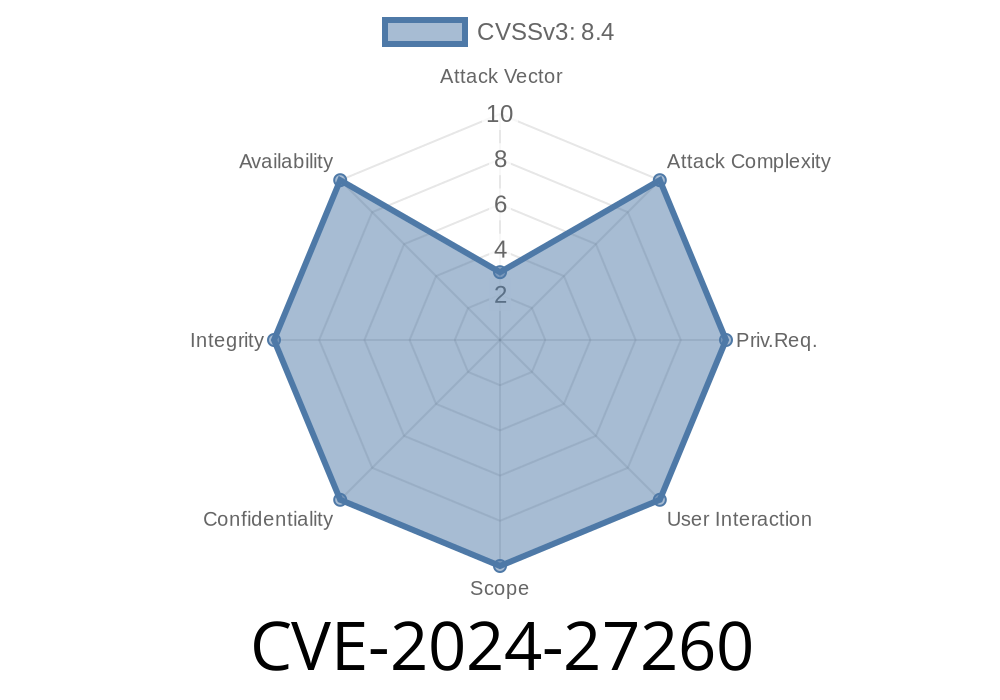IBM recently issued a security advisory for a serious local privilege escalation bug in their AIX and VIOS operating systems. This vulnerability, identified as CVE-2024-27260 (IBM X-Force ID: 283985), allows a non-privileged user to execute commands with higher system privileges using a flaw in the invscout command utility. Below, we break down what this means, why it’s important, and how attackers might exploit this bug, with examples and references.
What is CVE-2024-27260?
CVE-2024-27260 covers a command injection vulnerability in invscout(8), a tool used to collect IBM hardware and system inventory data. On affected systems – including IBM AIX versions 7.2, 7.3, and Virtual I/O Server (VIOS) 3.1 and 4.1 – invscout fails to sanitize user inputs correctly. This flaw can be leveraged by any local user to execute arbitrary commands as root or with higher system privileges.
How the Exploit Works
The vulnerability centers around how the invscout utility interacts with external input. AIX-based tools sometimes run scripts or binaries passed via the command line (or processed from user-writable directories). If the utility does not verify and sanitize these paths or arguments, an attacker may supply a malicious file or script and trick invscout into running it with escalated privileges.
Proof of Concept
Warning: The following example is for EDUCATIONAL purposes only. Do not try on ANY system without clear permission.
Here's a hypothetical sequence showing how a malicious user could exploit the bug
# 1. Create a malicious shell script
$ echo '/usr/bin/id > /tmp/invscout_pwned' > /tmp/hack.sh
$ chmod +x /tmp/hack.sh
# 2. Make invscout execute the malicious script
# Suppose invscout scans a directory and executes scripts with root
# The attacker tricks invscout into executing /tmp/hack.sh
$ invscout upload_inventory -l /tmp/hack.sh
If the invscout command doesn't sanitize the -l argument, it could execute /tmp/hack.sh with root privileges. The output in /tmp/invscout_pwned could look like:
uid=(root) gid=(system)
This shows that the hacker's file ran as root. With this vector, worse commands could be run or full root shells gained.
Real Exploit Scenario
Depending on the version, the attack may require additional steps, such as exploiting a writable library or path, but the key idea is the same: a non-root user manipulates file input for invscout and gains high privileges.
Detecting Exploitation
Check for suspicious files and logs where invscout is being run with odd parameters or from unusual accounts. Watch for new root-owned files in /tmp/ or other world-writable directories.
Patching
IBM has released official patches and recommendations. It is critical to update any vulnerable AIX or VIOS systems immediately.
- IBM Security Bulletin: CVE-2024-27260
- Fixes for AIX and VIOS
IBM X-Force Exchange:
IBM Security Bulletin:
Security Bulletin: Vulnerability in invscout for AIX/VIOS (CVE-2024-27260)
AIX Security Fixes:
Update: Patch your AIX and VIOS systems now.
- Audit: Review local usage of invscout and permissions on scripts/executables.
Monitor: Watch for suspicious logins and command executions.
Local privilege escalations like CVE-2024-27260 can turn a minor user account into a full system compromise. By understanding the root cause and patching quickly, you can keep your IBM-based systems safe from attack.
Feel free to share this post with your IBM sysadmin colleagues. For more details, always refer to the official IBM advisories.
Timeline
Published on: 05/16/2024 17:16:01 UTC
Last modified on: 06/04/2024 17:47:20 UTC
